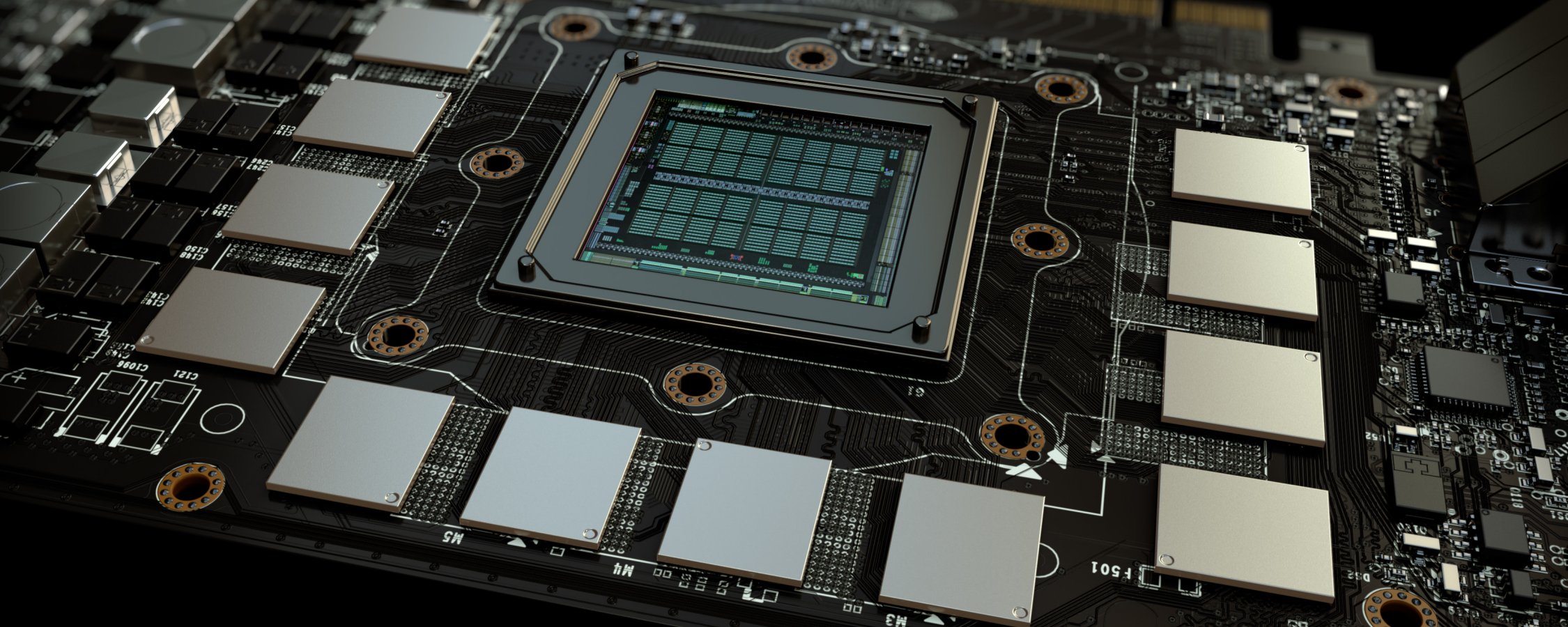Just recently we completed our annual graphics card roundup where we looked at all current-gen GPU offerings from Nvidia and AMD and compared them at every price point. Standout products included the GeForce GTX 980 Ti and Radeon R9 390X, though at $400+ we realize these stellar graphics cards aren't for everyone.
There doesn't appear to be much concrete evidence online to help buyers decide between the two (2GB vs. 4GB). Yet we found most forum threads were full of users recommending buyers avoid the cheaper 2GB cards in favor of the slightly more expensive 4GB models, described as "faster" and that they "won't limit performance."
It's usually the $200 options that will find their way into most gaming rigs. That means the GeForce GTX 960 or Radeon R9 380 will be the cards most will consider.
In our comparison we tested the 2GB models as we felt they represented the best value, however since then we've received several reader inquiries regarding the performance difference between cards sporting 2GB and the 4GB models. Given past experiences, we would tend to say "not much," but with a mere $20 price premium for the larger 4GB models, it got us thinking.
There doesn't appear to be much concrete evidence online to help buyers decide between the two. Yet we found most forum threads were full of users recommending buyers avoid the cheaper 2GB cards in favor of the slightly more expensive 4GB models, described as "faster" and that they "won't limit performance."
Therefore we have put together a clock-for-clock comparison of the GeForce GTX 960 and Radeon R9 380 using 2GB and 4GB cards. Also along for the ride is the previous-gen Radeon R9 290 4GB and the newer (rebadged) R9 390 8GB, which have again been compared at the same clock speeds.
For testing we'll be using eleven games including new titles such as Tom Clancy's Rainbow Six Siege, Star Wars Battlefront, Just Cause 3, Assassin's Creed Syndicate and The Witcher 3: Wild Hunt. All games have been tested at 1920x1080 and 2560x1600 using two graphics quality settings.
First we will look at a max VRAM usage scenario using the best in-game graphics quality settings, which we expect to be borderline playable on the mainstream GTX 960 and R9 380 with console-like 30fps. Then we'll be backing off the quality settings a bit for a more realistic and desired gaming scenario.
Test System Specs
- Intel Core i7-6700K (4.00GHz)
- 2x 8GB Kingston Predator DDR4-3000
- Asrock Z170 Extreme7+ (Intel Z170)
- Silverstone Strider Series (700w)
- Crucial MX200 1TB (SATA 6Gb/s)
- HIS R9 390X IceQ X² 8GB
- HIS R9 290X iPower IceQ X² 4GB
- HIS R9 380 IceQ X² 2GB
- HIS R9 380 IceQ X² 4GB
- Gainward GeForce GTX 960 Phantom 4GB
- Gainward GeForce GTX 960 Phantom 2GB
- Microsoft Windows 10 Pro 64-bit
- Nvidia GeForce 361.43 WHQL
- AMD Crimson Edition 15.12
Benchmarks: Crysis 3
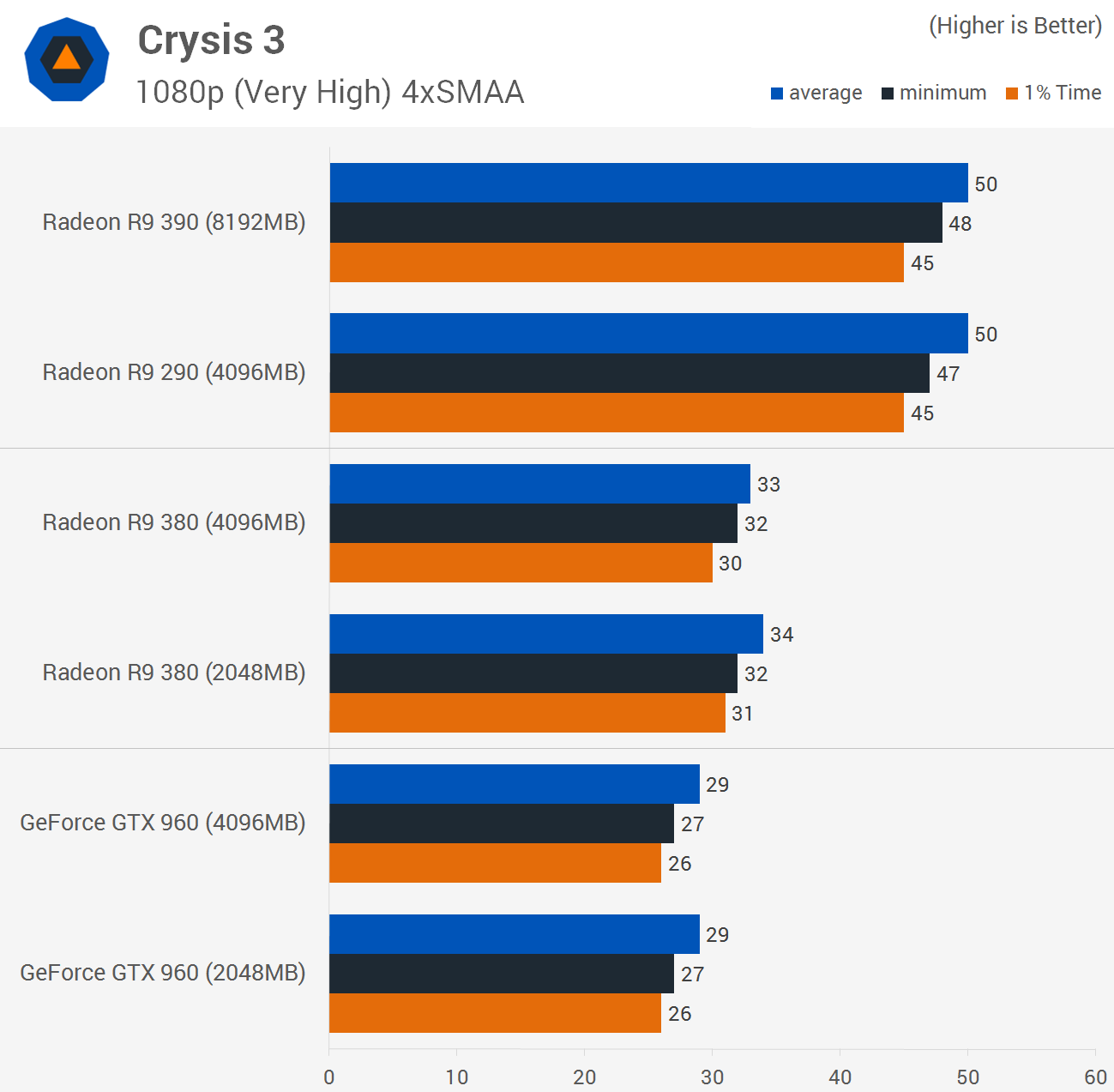
Crysis 3 is still a very visually impressive game though even with the graphics settings maxed out and 4xSMAA enabled, the game doesn't eat up a lot of VRAM. Despite that the Radeon R9 380 and GeForce GTX 960 both struggled to deliver smooth gameplay.
The 4GB 380 averaged 33fps while the 2GB model delivered a similar 34fps, clearly the cards' memory capacity isn't limiting performance in this title. As you might expect the Radeon R9 390 and 290 delivered the same performance with an average of 50fps each.
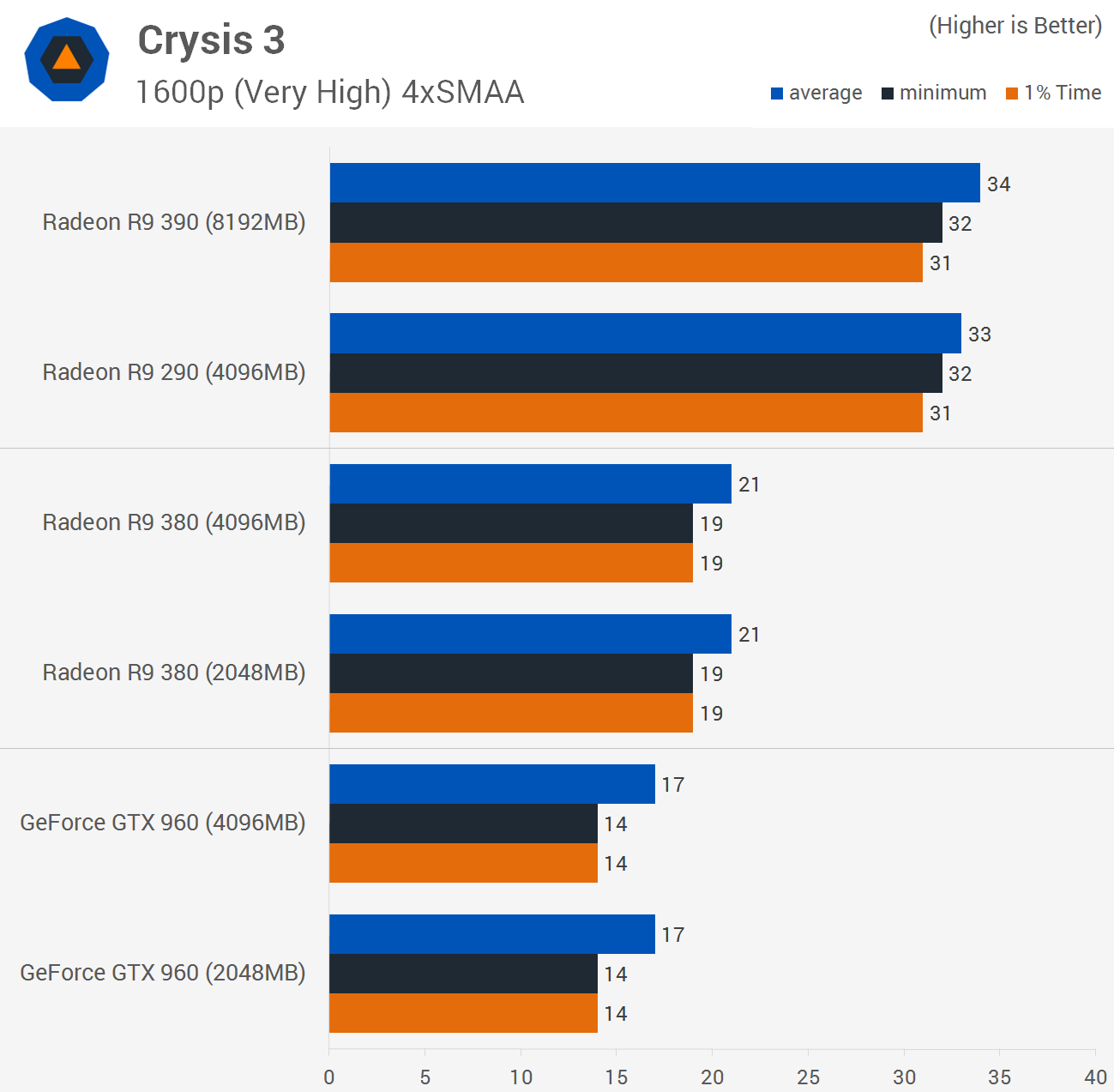
Now at 2560x1600 we find 2.4 gigabytes of VRAM being used. In spite of exceeding the 2GB capacity of the GTX 960 and R9 380 2GB cards however both cards delivered identical performance as their 4GB variants.
Since we are using less than 4GBs of VRAM in this test it isn't surprising to find the 4GB 290 delivering the same performance as the 8GB 390. The recurring theme here is that GPU horsepower is lacking well before memory capacity becomes the issue.
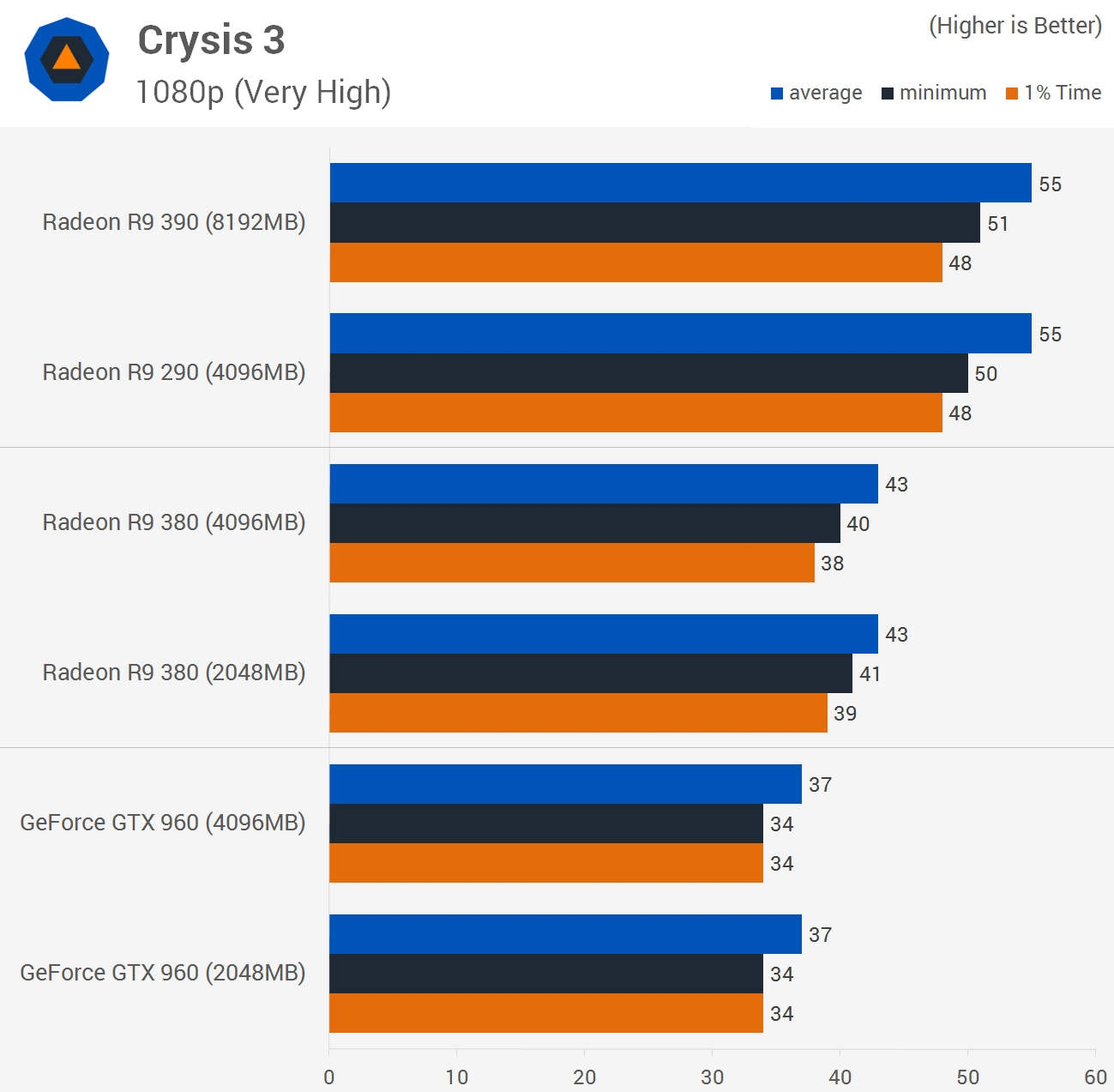
Lowering the quality settings to more realistic levels on the R9 380 and GTX 960 for smoother performance delivers similar performance trends, again the larger memory capacity cards have nothing to offer in the way of performance.
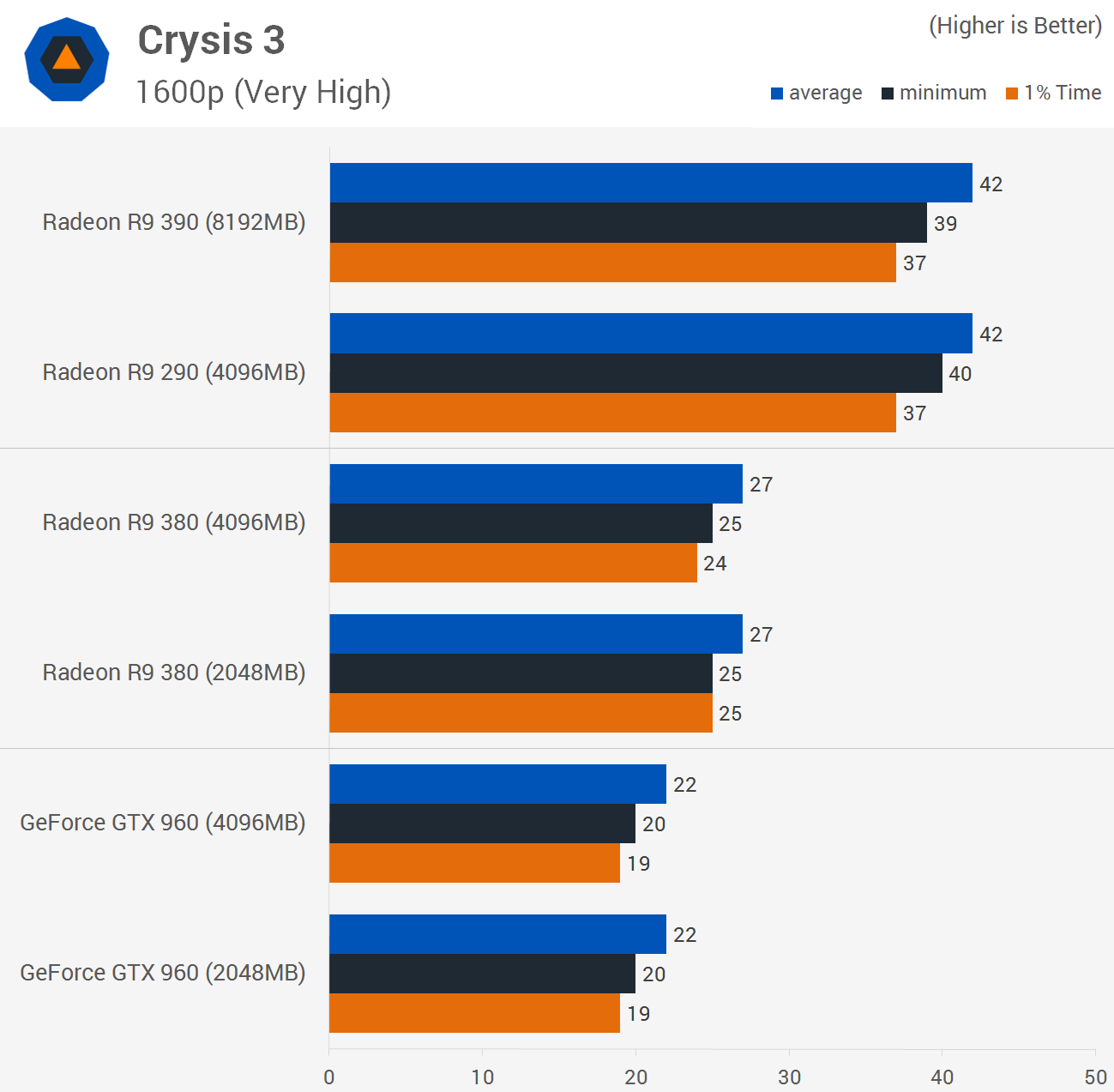
Using the very high quality preset at 2560x1600 still sees the R9 380 and GTX 960 unable to deliver playable performance.
Benchmarks: Assassin's Creed Syndicate
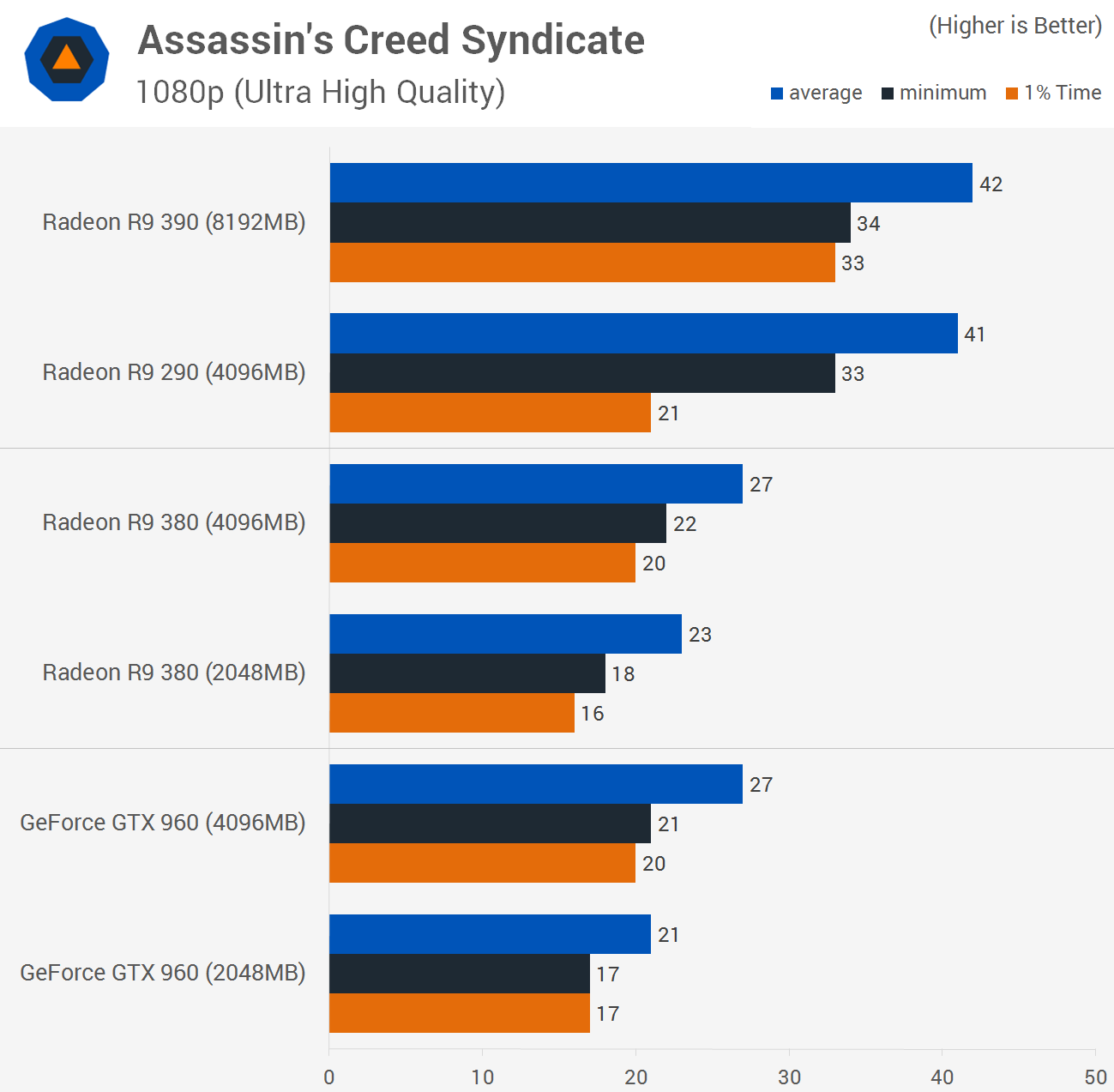
In stark contrast to the Crysis 3 test, we find there is a large performance difference between the 2GB and 4GB GTX 960 and R9 380 graphics cards in Assassin's Creed latest installment. Surprisingly at 1080p the 4GB 960 was 29% faster than the 2GB model, while the R9 380 4GB was also 17% faster than the 2GB model.
Although the 4GB models are clearly faster, both the GTX 960 and R9 380 averaged less than 30fps with minimums in the low 20s. So how relevant is this data? It will be interesting to see if the 4GB models can still enjoy a significant performance advantage under more playable conditions.
The 8GB 390 and 4GB 290 provided similar average and minimum performance, though the 1% performance did heavily favour the 390 so that is something to keep an eye on.

At 2560x1600 the GTX 960 and R9 380 data can be ignored as both 2GB and 4GB models were unable to get anywhere near playable framerates. The more expensive Radeon 390 and 290 also failed to deliver playable performance and were evenly matched. It's worth pointing out that the game was seen using up to 4.8GBs of VRAM, so again when pushing this much data the 390 really struggles.

Using the 'high' quality preset provides some interesting results. The GTX 960 is now able to deliver a very playable 56fps average, though it is interesting to note that the same performance was achieved using both the 2GB and 4GB models.
However, this wasn't true for the Radeon R9 380 as the 4GB model was still clearly the faster option delivering a 15% greater average frame rate and a 23% higher minimum frame rate. Although the 2GB model was still able to achieve playable performance there is a clear argument for getting the 4GB model for Assassin's Creed Syndicate.

The GeForce GTX 960 and Radeon R9 380 struggled to provide playable performance at 2560x1600 and here the 4GB models aren't a great deal faster than the 2GB models. Also the 290 and 390 both delivered the same 56fps average with similar minimum and 1% performance.
Benchmarks: Grand Theft Auto V

Grand Theft Auto V at 1080p we can see that the 4GB R9 290 and 8GB R9 390 deliver the exact same performance. Meanwhile the GTX 960 2GB and 4GB models delivered similar performance, though this wasn't the case for the R9 380. Here the 4GB R9 380 was considerably faster than the 2GB model, delivering 41% more performance at 1080p for what is not technically playable performance.

Despite consuming 4.5GBs of VRAM there wasn't any difference between the 4GB R9 290 and 8GB R9 390.
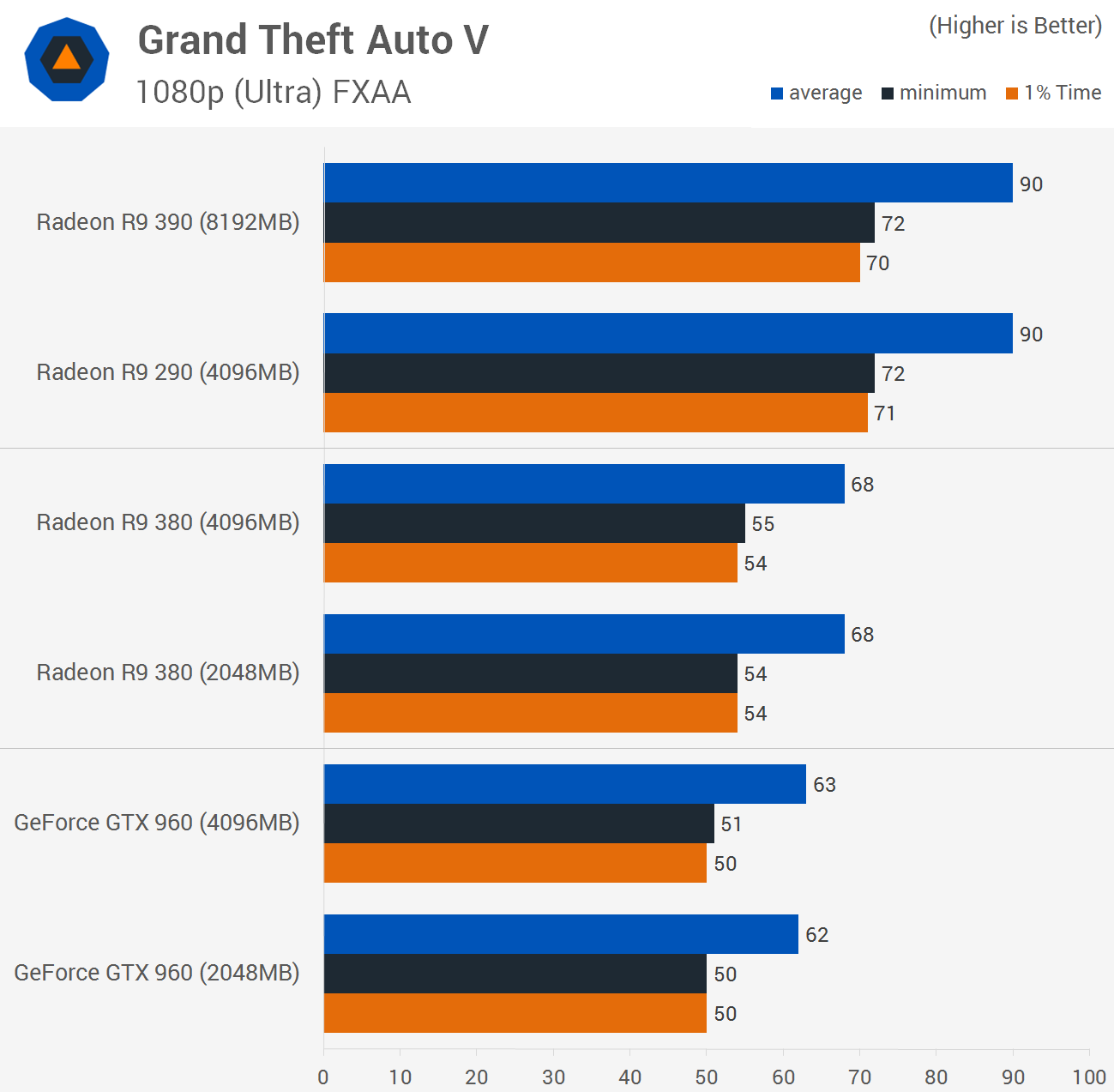
Turning off 4xMSAA and the advanced graphics options we see that the GTX 960 and R9 380 are able to deliver far better performance and under these playable conditions the 4GB models have nothing to offer in the way of extra performance.
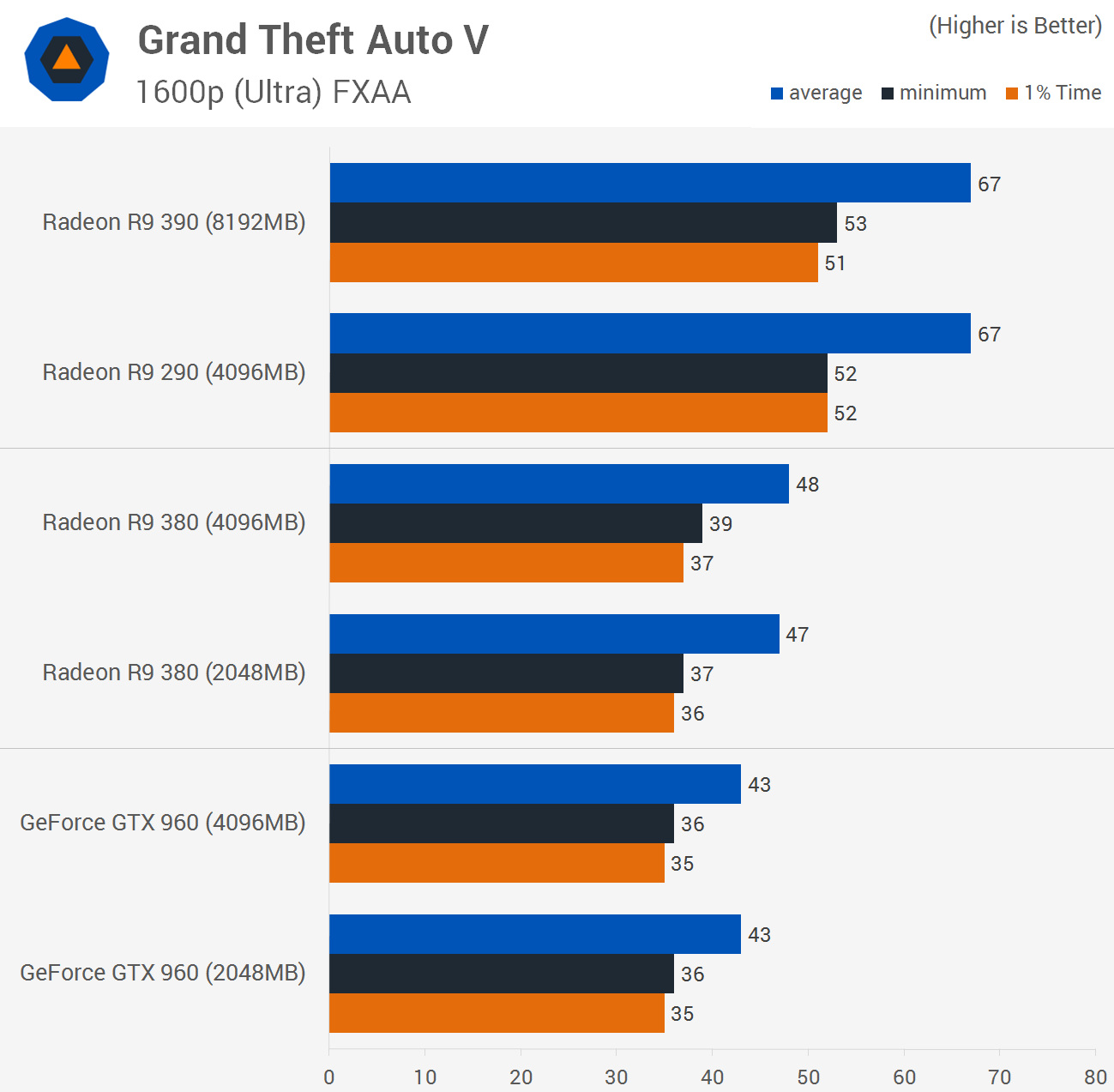
Even at 2560x1600 with MSAA and Advanced Graphics disabled the R9 380 and GTX 960 are able to deliver playable performance in GTAV. Interestingly the 4GB models are again unable to provide any additional performance.
